Microscopium is a minor constellation located in the southern celestial hemisphere. It is one of the twelve created constellations in the 18th century by French astronomer Nicolas-Louis de Lacaille.
Key Facts & Summary
- Microscopium is among the 88 modern constellations, being the 66th largest constellation in the sky. It stretches for over 210 square degrees and like other 18th century constellations, it represents a scientific instrument, namely the microscope.
- Microscopium isn’t associated with any myths and it doesn’t contain any Messier objects.
- Only one meteor shower is associated with Microscopium, the Microscopids. However, they are a minor meteor shower.
- Currently, around 2 stars in Microscopium have been discovered to host planets. They are the WASP-7 F-type star, and the yellow-white dwarf HD 205739.
- The stars of Microscopium are quite faint, and they are hardly visible from most of the non-tropical Northern Hemisphere.
- The brightest star in Microscopium is the yellow giant Gamma Microscopii, which has an apparent magnitude of 4.68.
- Gamma Microscopium was very close to our Solar System around 3.9 million years ago when it passed within 1.14 and 3.45 light-years of the Sun.
- The constellation of Microscopium hosts some interesting stars, such as Gamma, Alpha, Epsilon, Theta1, and Theta2 Microscopii, Lacaille 8760, BO Microscopii, AT Microscopii, R Microscopii, S Microscopii, HD 205739, WASP-7, or HD 202628 among others.
- A couple of deep-sky objects can be found in Microscopium, such as the barred spiral galaxy NGC 6925, the Microscopium Void, NGC 6923, or the Microscopium Supercluster.
- The best time to observe stars and deep-sky objects in Microscopium is during the month of September when the constellation is the most prominent.
- Many objects are too faint to be seen in this constellation with the naked eye.
The constellation of Microscopium is among the twelve created in the 18th century by French astronomer Nicolas-Louis de Lacaille. It is one of several constellations that depict a scientific instrument.
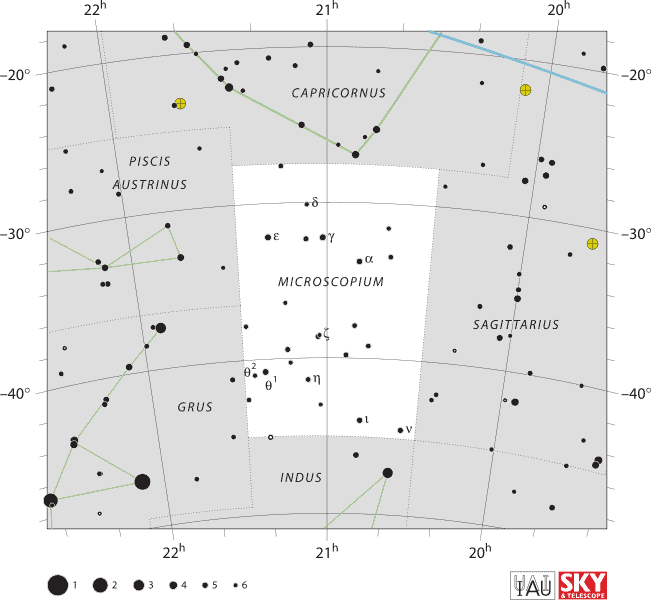
In the case of Microscopium, it represents a celestial microscope. Since it is a relatively new constellation, Microscopium isn’t associated with any myths, and no Messier objects are present within this constellation.

Location
The constellation of Microscopium is the 66th largest constellation in the sky. Microscopium spreads out for over 210 square degrees and it lies to the south of Capricornus, between Piscis Austrinus and Sagittarius, in the fourth quadrant (NQ4) of the southern hemisphere.
Microscopium is hard to see from northern latitudes, however, it can be seen at latitudes between +45o and -90o.
- Right Ascension: 21h
- Declination: -36o
- Visible: +45o and -90o
- Best viewed: at 21:00 (9 p.m.) during September

The neighboring constellations around Microscopium are Capricornus, Grus, Indus, Piscis Austrinus, Sagittarius, and Telescopium. Microscopium belongs to the Lacaille family of constellations, along with Antila, Caelum, Circinus, Fornax, Horologium, Mensa, Norma, Pictor, Reticulum, Sculptor, and Telescopium.
Notable Stars
The constellation of Microscopium is quite faint since its brightest stars are of only magnitude fifth. The brightest star in Microscopium, Gamma Microscopii, has an apparent magnitude of 4.68.
Despite its faintness, Microscopium hosts some interesting stars, such as Gamma, Alpha, Epsilon, Theta1, and Theta2 Microscopii, Lacaille 8760, BO Microscopii, AT Microscopii, R Microscopii, S Microscopii, HD 205739, WASP-7, or HD 202628 among others.

Currently, around 2 stars in Microscopium have been discovered to host planets. They are the WASP-7 F-type star, and the yellow-white dwarf HD 205739.
Gamma Microscopii
Gamma Microscopii is a G-type giant located at around 223 light-years away from us. It is the brightest star in Microscopium, and it was once very close to our Solar System around 3.9 million years ago when it passed within 1.14 and 3.45 light-years of the Sun.

Gamma Microscopii has around 250% of our Sun’s mass, 1,000% of its radius, and it is 64 times brighter than our Sun. It is a young star, of around 620 million years, and it is cooler than our Sun, having temperatures of around 5,050 K.
Epsilon Microscopii
Epsilon Microscopii is a white-hued A-type main-sequence star situated at around 166 light-years away from Earth. It has an apparent magnitude of 4.71.

Epsilon Microscopii has around 218% of our Sun’s mass, 220% of its radius, and it is 35.62 times brighter than our Sun. It is also hotter than our Sun, having temperatures of around 9,126 K, and it is a fast-spinning star, with a rotational velocity of 127 km / 78.9 mi per second.
Alpha Microscopii
Alpha Microscopii is an evolved G-type giant star located at around 400 light-years away from us. This star’s apparent magnitude varies from 4.88 to 4.94.

Alpha Microscopii has around 313% of our Sun’s mass, 1,640% of its radius, and it is 160 times brighter than our Sun. It is a young star, being around 360 million years old, and it is cooler than our Sun, having temperatures of around 4,923 K.
Lacaille 8760
Lacaille 8760 is a red dwarf star, the brightest M dwarf star in Earth’s sky, being also among the nearest stars to us, at a distance of only 12.9 light-years.
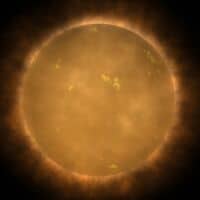
Lacaille 8760 has an apparent magnitude of 6.67, and it is one of the largest and brightest red dwarf known. This red dwarf has around 60% of our Sun’s mass, 51% of its radius, and it is cooler than our Sun, having temperatures of around 3,800 K.
AU Microscopii
AU Microscopii is a red dwarf variable star that has a circumstellar disk of dust known as a debris disk surrounding it. It also hosts a Neptune-sized planet.

AU Microscopii has an apparent magnitude of 8.73, and it is located at around 32.3 light-years away from our Solar System. This star is part of the Beta Pictoris Moving Group – a young moving group of stars that are relatively close to us. They have a common origin and motion through space.
AU Microscopii has around 31% of our Sun’s mass, 84% of its radius, and its circumstellar disk of dust measures at least 200 AU in radius.
BO Microscopii
BO Microscopii also dubbed as Speedy Mic, is a fast-spinning star located at around 218 light-years away from us. It has an apparent magnitude of 9.39.
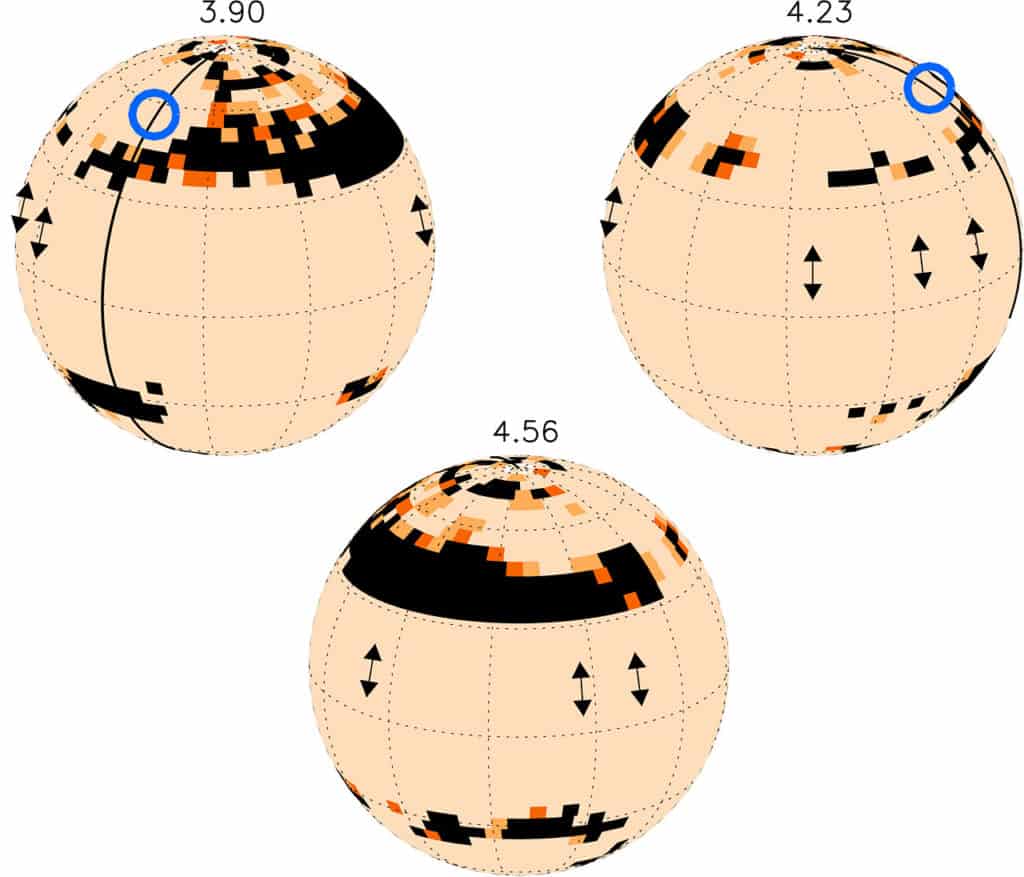
BO Microscopii has around 82% of our Sun’s mass, 106% of its radius, and has a rotational velocity of around 135 km / 83.8 mi per second. This star is also classified as a Flare Star since it undergoes sudden increases in X-ray and ultraviolet emissions. BO Microscopii is among the most active stars in the vicinity of the Sun.
WASP-7
WASP-7, also designated as HD 197286, is an F-type star located at around 520 light-years away from us. It has an apparent magnitude of 9.5, and it appears to host a hot-Jupiter – a dense planet with Jupiter’s mass that is close to its hot parent star and thus it emits enough heat to shine.

WASP-7 has around 128% of our Sun’s mass, 123% of its radius, and it is hotter than our Sun, with temperatures reaching around 6,400 K.
AT Microscopii
AT Microscopii is a binary star system located at around 35 light-years away from us. Both stars in this system are red dwarf flare stars – they undergo random increases in brightness.

They have a combined visual magnitude of around 11, to 11.1. The primary star, designated as AT Mic A, has around 27% of our Sun’s mass, and 36% of its radius.
The secondary star, designated as AT Mic B, has around 25% of our Sun’s mass, and only 37% of its radius. Both stars are smaller and cooler than our Sun.
R Microscopii
R Microscopii is a red giant star located at around 2,700 light-years away. It is also a Mira variable type of star, displaying changes in brightness that vary from magnitude 8.3 to 13.8 over 138 days. This red giant is 444 times brighter than our Sun.

S Microscopii
S Microscopii is also a red giant and Mira-type variable star. It is located at around 6,000 light-years away from us, and its apparent magnitude varies between 7.4 to 14.8 over 210 days.
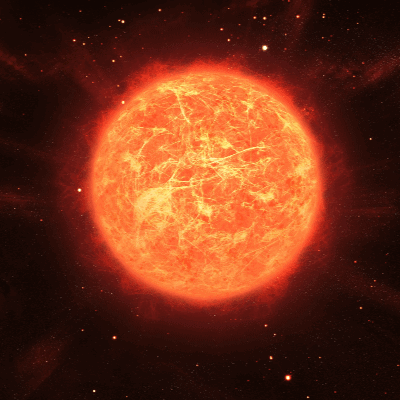
HD 205739
HD 205739 is a yellow-white dwarf located at around 350 light-years away from us. It has an apparent magnitude of 8.56, and it hosts a Jupiter-like planet that has recently been detected in a Mercury-like orbit around its parent star.

HD 205739 has around 122% of our Sun’s mass, 133% of its radius, and it is 2.3 times brighter than our Sun. This star is also hotter, having temperatures of around 6,176 K, however, it is younger than our Sun, being 2.84 billion years old.
HD 202628
HD 202628 is a G-type star located at around 79.6 light-years away from Earth. It has an apparent magnitude of + 6.75, and it may also host an exoplanet.
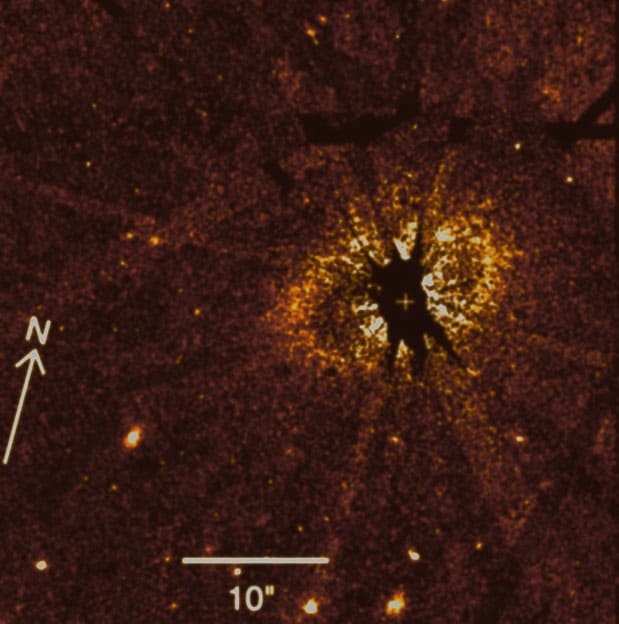
This star has around 108% of our Sun’s mass, 101% of its radius, and it is as bright as our Sun, having a similar temperature of around 5,833 K. However, HD 202628 is much younger than our Sun, being around 600 million years old.
Deep-sky Objects
A couple of deep-sky objects can be found in Microscopium, such as the barred spiral galaxy NGC 6925, the Microscopium Void, NGC 6923, or the Microscopium Supercluster. However, these objects are rather faint.
The best time to observe them, and the stars in Microscopium, is during the month of September when the constellation is the most prominent.

NGC 6925
NGC 6925 is an unbarred spiral galaxy that lies 3.7 degrees west-northwest of the star Alpha Microscopii. This galaxy is situated at around 99.62 million light-years away from us, and it has an apparent magnitude of 12.09.

The Microscopium Void
The Microscopium Void is a roughly rectangular void of relatively empty space, bounded by incomplete sheets of galaxies from other voids in the southern celestial hemisphere. It was discovered in 1984 by South African astronomer Tony Fairall.

NGC 6923
NGC 6923 is a spiral galaxy located at around 34.4 million parsecs away from us. It has an apparent magnitude of 12.2, and just like NGC 6925, it was discovered by astronomer John Herschel in 1834.

The Microscopium Supercluster
The Microscopium Supercluster is a supercluster composed out of the Abell clusters 3695 and 3696. It was first noticed in the 1999s, and it has received little study, and thus almost nothing is known of it.

Meteor Showers
The constellation of Microscopium is associated with only one minor meteor shower, the Microscopids. This meteor shower is active from June to mid-July.

Did you know?
- An interesting star in Microscopium is DD Microscopii, which is a symbiotic star composed out of an orange giant and a white dwarf star that are in close orbit, with the smaller star ionizing the stellar wind of the larger star. This star system appears to have its origin in the galactic halo of the Milky Way.
- The stars that comprise Microscopium are in a region that was previously considered the hind feet of Sagittarius, a neighboring constellation.
- The constellation of Microscopium was introduced in 1751 by Lacaille with the French name “le Microscope”. This occurred after the astronomer observed and cataloged 10,000 southern stars.
Sources:
Image Sources:
- https://upload.wikimedia.org/wikipedia/commons/thumb/2/2d/Microscopium_IAU.svg/651px-Microscopium_IAU.svg.png
- https://upload.wikimedia.org/wikipedia/commons/thumb/2/2f/Sidney_Hall_-_Urania%27s_Mirror_-_Sagittarius_and_Corona_Australis%2C_Microscopium%2C_and_Telescopium.jpg/640px-Sidney_Hall_-_Urania%27s_Mirror_-_Sagittarius_and_Corona_Australis%2C_Microscopium%2C_and_Telescopium.jpg
- https://in-the-sky.org/images/constellations/con_MIC_000.png
- https://starregistration.net/media/wysiwyg/Constellations/Microscopium.png
- https://theskylive.com/sky/stars/star-images/80/8039_800.jpg
- https://theskylive.com/sky/stars/finder-charts/epsilon-microscopii-finder-chart.png?c=1586738669
- https://www.constellation-guide.com/wp-content/uploads/2013/04/Alpha-Microscopii.jpeg
- https://vignette.wikia.nocookie.net/chaos-chronicles/images/3/36/Reddwarf.jpg/revision/latest/window-crop/width/200/x-offset/250/y-offset/0/window-width/1688/window-height/1687?cb=20160302174844
- https://www.nasa.gov/sites/default/files/thumbnails/image/au_mic_still_high_res_illus_label.jpg
- https://cdn.eso.org/images/screen/eso0753a.jpg
- https://upload.wikimedia.org/wikipedia/commons/c/c9/Planet_WASP-7_b.png
- https://theskylive.com/sky/stars/star-images/79/7935_800.jpg
- https://i.ytimg.com/vi/HMckUFG5o1o/maxresdefault.jpg
- https://www.factsjustforkids.com/images/red-giant-star.png
- https://vignette.wikia.nocookie.net/space-engine/images/7/77/Lacaille_8760_4_orbit.jpg/revision/latest/top-crop/width/360/height/450?cb=20161018192627
- http://w.astro.berkeley.edu/~kalas/disksite/images/hd202628_vis.jpg
- https://upload.wikimedia.org/wikipedia/commons/thumb/f/f2/Arp-Madore_2026-424.tif/lossy-page1-709px-Arp-Madore_2026-424.tif.jpg
- https://cgs.obs.carnegiescience.edu/CGS/data/images/NGC6925_color.jpg
- https://images.slideplayer.com/32/9883825/slides/slide_18.jpg
- https://cgs.obs.carnegiescience.edu/CGS/data/images/NGC6923_color.jpg
- https://upload.wikimedia.org/wikipedia/commons/thumb/4/4d/Heic1401a-Abell2744-20140107.jpg/640px-Heic1401a-Abell2744-20140107.jpg
- https://cdn.mos.cms.futurecdn.net/2eZGNr6Z64EGURw3KLyhdE.jpg
